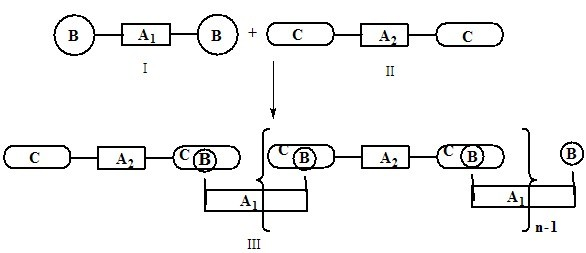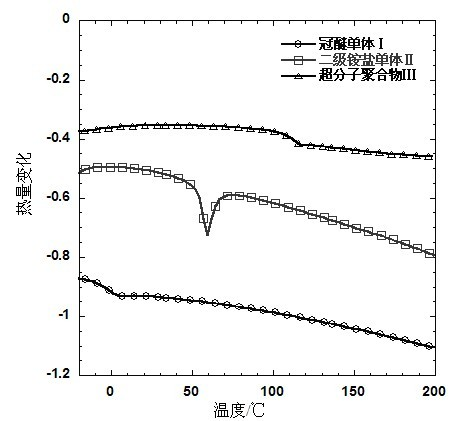Supermolecular polymer photoelectric material and application thereof
A technology of supramolecular polymers and optoelectronic materials, which is applied in the field of organic optoelectronic materials, can solve the problems that supramolecular polymer materials have not attracted attention, and achieve the effects of easy mass preparation, simple synthesis, and great commercial prospects
- Summary
- Abstract
- Description
- Claims
- Application Information
AI Technical Summary
Problems solved by technology
Method used
Image
Examples
Embodiment 1
[0034] Embodiment 1 Crown ether monomer 2,7-bis(dibenzo 24-crown-8)-9,9-dioctyl fluorene (I) and secondary ammonium salt monomer N, N'-[(9, Preparation of 9-dioctylfluoren-2,7-yl)-bis(1,4-phenyl)]-dimethylene dibenzyl ammonium hexafluorophosphate (II)
[0035] The synthetic route is as follows:
[0036]
[0037] Preparation of crown ether monomer 2,7-bis(dibenzo24-crown-8)-9,9-dioctylfluorene (I)
[0038] (1) Preparation of 4-(4,4,5,5-tetramethyl-1,3,2-dioxaborolan-2-yl)-dibenzo24-crown-8(a)
[0039] 4-Bromo-dibenzo-24-crown 8 (5.27g, 10mmol), bis-pinacol borate (3.81g, 15mmol), potassium acetate 4.0g, 40mmol) and 1'1-bis(diphenyl Phosphine) (ferrocene) palladium dichloride (150 mg) was added to a 150 mL two-necked flask, and 100 mL of 1,4-dioxane was added under the protection of Ar gas. Heated to reflux and reacted for 36h. The reaction solution was poured into ice-brine, dichloromethane was added under stirring for extraction, the organic layer was washed with water,...
PUM
 Login to View More
Login to View More Abstract
Description
Claims
Application Information
 Login to View More
Login to View More - R&D
- Intellectual Property
- Life Sciences
- Materials
- Tech Scout
- Unparalleled Data Quality
- Higher Quality Content
- 60% Fewer Hallucinations
Browse by: Latest US Patents, China's latest patents, Technical Efficacy Thesaurus, Application Domain, Technology Topic, Popular Technical Reports.
© 2025 PatSnap. All rights reserved.Legal|Privacy policy|Modern Slavery Act Transparency Statement|Sitemap|About US| Contact US: help@patsnap.com



